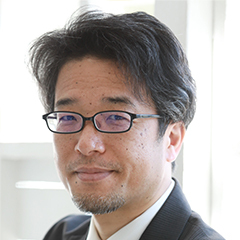Is overtime payment provided to teachers?
The hectic workload of elementary and junior high school teachers has been pointed out repeatedly. According to a survey on teachers’ actual working conditions (2016) by the Ministry of Education, Culture, Sports, Science and Technology (MEXT), the percentage of teachers who work 60 hours or more per week, which is comparable to the ‘karoshi line’ (an official measure of excessive hours of overtime per month, which is 80 hours or more), was a little more than 30% in elementary schools and a little less than 60% in junior high schools.
Moreover, according to the Teaching and Learning International Survey by the Organisation for Economic Co-operation and Development (OECD) in 2018, elementary and junior high school teachers’ working hours in Japan were the longest among the surveyed countries.
Of course, there are people who work long hours similarly in companies in general. However, in normal companies, overtime is covered by the overtime allowance of an extra 25%.
On the other hand, teachers do not have an overtime allowance. This is stipulated in a law called the Act on Special Measures concerning Salaries and Other Conditions for Education Personnel of Public Compulsory Education Schools, etc. (1971).
This act provides that, instead of an overtime allowance, etc., being paid, 4% of the monthly salary is paid as a teacher’s adjustment allowance.
This is explained by the peculiarity of the teacher’s job and way of working. A teacher’s job is a blend of autonomous and voluntary activities related to preparation for classes, etc., and tasks under the reporting line. Their working form differs during academic terms and during long-term vacations. These aspects differ from normal jobs, they say.
However, current teachers are busy enough with obligatory tasks, and do not have extra time to volunteer. Even during summer vacations and such, they are swamped with training, parent and child meetings, club activity instructions, etc., and far from being “off-season.” If we think in the light of the above-mentioned actual working situations, the adjustment of 4% is not at all sufficient.
In the first place, the aforementioned law prohibits ordering teachers to work overtime, except for four overtime items (in the case of special or urgent compelling necessity concerning 1. student practices, 2. school events, 3. teachers’ meetings, 4. emergency disasters, etc.).
However, it is difficult to say that the management of working hours by school principals is functioning well enough because an additional cost of the overtime allowance is not generated and managers are not penalized by letting teachers work overtime owing to the law.
Two lawsuits over working overtime
Grueling work environment is also disputed in the judiciary. One of them is a lawsuit filed by Mr. Masao Tanaka (alias), a public elementary school teacher in Saitama Prefecture. In this lawsuit, for overtime work, overtime payment or compensation based on the State Redress Act was claimed.
However, as of now (January 2023), the plaintiff’s claim was dismissed both at the first trial and the second trial. At the court, the claim by the defendant, which stated that much of the overtime work was done voluntarily by the teacher and not by the principal’s order, was broadly accepted.
Nevertheless, advances in several aspects were seen too. One of them was that it was recognized that the overtime surpassing the legal working hours occurred owing to the school principal’s order, besides four cases of overtime. Another one was that it was confirmed that such overtime would be covered by compensation based on the State Redress Act.
However, unfortunately, until the second trial, the actual compensation was not approved as such overtime hours were considered trivial.
The plaintiff complained about the calculation base on which only five minutes were recognized as preparatory time for a class of one hour. This is currently being deliberated at the Supreme Court.
In the meantime, there was also a court case in Osaka over long working hours of a teacher. The plaintiff Mr. Takeshi Nishimoto, from an Osaka prefectural senior high school, claimed compensation for suffering from adjustment disorder due to excessive labor and having to take temporary leave twice.
For this, Osaka District Court approved the claim entirely and issued a court order for compensation against Osaka Prefecture.
In fact, also in this lawsuit, Osaka Prefecture had claimed that Mr. Nishimoto was not ordered to work excessively but did so voluntarily. However, the court took the situation seriously because he suffered from a health disorder, and recognized the management responsibility of the school principal.
Compensation was approved in one case but not in the other. What should we make of this difference?
Two lawsuits differ in the sense that in Saitama, the claim was for compensation for the overtime work itself, while in Osaka, the claim was for compensation for damage to health caused by the overtime work.
However, teachers on site would see that most of the overtime work engaged by the two teachers was obligatory, and there is no difference in the work between the two.
Work-style reforms of teachers
Work-style reforms to resolve the hectic workload of teachers have already been tried.
In 2019, the Act on Special Measures concerning Salaries and Other Conditions for Education Personnel of Public Compulsory Education Schools, etc., was partially revised, and the introduction of the one-year variable working hours system was enabled. This is meant to allow teachers to take leave in bulk in summer vacations, using the overtime hours during term time, by expanding the assignment period of overtime working hours to one year.
Moreover, the MEXT indicated that the “working hours at school or other places,” including the autonomous and voluntary work, would be managed, and the overtime should be “45 hours or less per month, 360 hours or less per year” as a guideline.
However, as previously mentioned, summer vacation is not “off-season” time. In addition, it is feared that as working hours are being prolonged during the terms, people who will need to leave early owing to childcare or nursing will feel uncomfortable or club activity instructions would be obligatory as it would be within the prolonged overtime.
Moreover, concerning the “working hours at school or other places,” some principals and vice principals, who are in trouble with time management, are forcing teachers to make false statements. Thus, we need to keep eye on whether such a balancing-out kind of management of “working hours at school or other places,” is indeed a contribution to labor improvement for teachers.
Besides these reforms, the Ministry, is exploring various measures to resolve workload issues, such as abolishment of the system of renewal of the teacher license, starting discussions over shifting club activities on holidays at junior high schools to the private sector.
In the meantime, in fact, the Ministry is rapidly increasing the number of work tasks too. For example, programming education and career education are promoted, and foreign language has been embedded in the elementary school curriculum.
Measures by the Ministry are as if they are stepping on the brake and the accelerator at the same time for the work-style of teachers. They might let reform stray and end up in being a pie in the sky.
Moreover, we need to think about the work-style of teachers from a cultural aspect as well as an institutional aspect. Teachers share a culture which values enthusiasm, and teachers working devotedly tend to be appreciated by colleagues. There is an aspect that this culture among teachers is encouraging their excessive working.
Future of the work-style reforms
Such a grueling working environment is thought to be playing a role in the decline of the competition rate of teacher employment examinations and the shortage of teachers.
Concerning the elementary school teacher employment examinations carried out in summer 2022, 29 areas among 66 areas which held employment examinations showed competition rates of 1 to less than 2. Declining competition rates are leading to shortages of temporary employed teachers and part-time ones, for which unsuccessful applicants served as one resource.
As a result, the situation may create a negative spiral, by accelerating the declining quality of classes and the hectic workload of teachers, and further decreasing the number of applicants.
Against this, some school boards are aiming to secure applicants by focusing on promoting the attractions of the teaching profession, implementing early employment examinations, or holding examinations in different cities, etc.
Concerning the promotion of the attractions of the teaching profession, in 2021, the MEXT started up the “#Kyoshi no Baton (#teacher’s baton)” project, and arranged a platform where teachers themselves promote the attractions via SNS.
However, the messages received were only those which conveyed the miseries of the actual working environment.
This project brought unintended results, deviating from the initial purpose. However, it could be said that each message from a teacher on that platform and the above-mentioned two lawsuits generated a big wave to open up the problems on teachers’ working environment.
In response to this trend, the ruling Liberal Democratic Party also started to move towards reviewing the above-mentioned law (November 2022). They appear to be considering an increase in the teachers’ adjustment allowance, but this cannot reduce the working hours.
Because while paying extra wages for overtime could have the aspect of penalizing employers, the teachers’ adjustment allowance, which is a fixed amount, does not have such a function.
In order to reduce the working hours of each teacher, payment of an overtime allowance and sanctions against managers who enforce heavy workloads, as well as reviewing the teacher quota, is necessary.
The teacher quota allocated to each school is determined based on the number of classes, etc. (Act on Standards for Class Formation and Fixed Number of School Personnel of Public Compulsory Education Schools). However, in order to reform the work-style of teachers, the number of classes one has to teach should be capped, and the standard for calculations needs to be re-established to maintain this.
Another important point is that teachers themselves need to try to reduce their workload.
Many tasks for teachers are determined by each school in its own way. It can be confirmed that the quality and quantity of managing classes, instructing students, school events, and club activities are left to each school’s discretion.
As for classes, although the national government determines the broad framework via the Course of Study and authorized textbooks, how to conduct the classes and how to deal with the assignments, exams, etc., are left to the discretion of the individual teacher and groups of teachers.
This means that teachers have the discretion to reduce their workload.
However, so far, teachers’ discretion has led to increased workloads. We cannot deny that the result of working devotedly, thinking that it is good for children, led to their hectic workload.
As a result of expanding “the front line” voluntarily, now that they cannot handle it, they should not only require “supply” but also seriously think about reducing “the front line” themselves.
Work-style reforms can be gradually achieved as a result of efforts at various levels, such as the legal system, lawsuits, culture, SNS, individual awareness, and labor-management negotiations.
It could be said that pushing the reforms forward at each level is required to overcome the crisis in the teaching profession.
* The information contained herein is current as of January 2023.
* The contents of articles on Meiji.net are based on the personal ideas and opinions of the author and do not indicate the official opinion of Meiji University.
* I work to achieve SDGs related to the educational and research themes that I am currently engaged in.
Information noted in the articles and videos, such as positions and affiliations, are current at the time of production.


